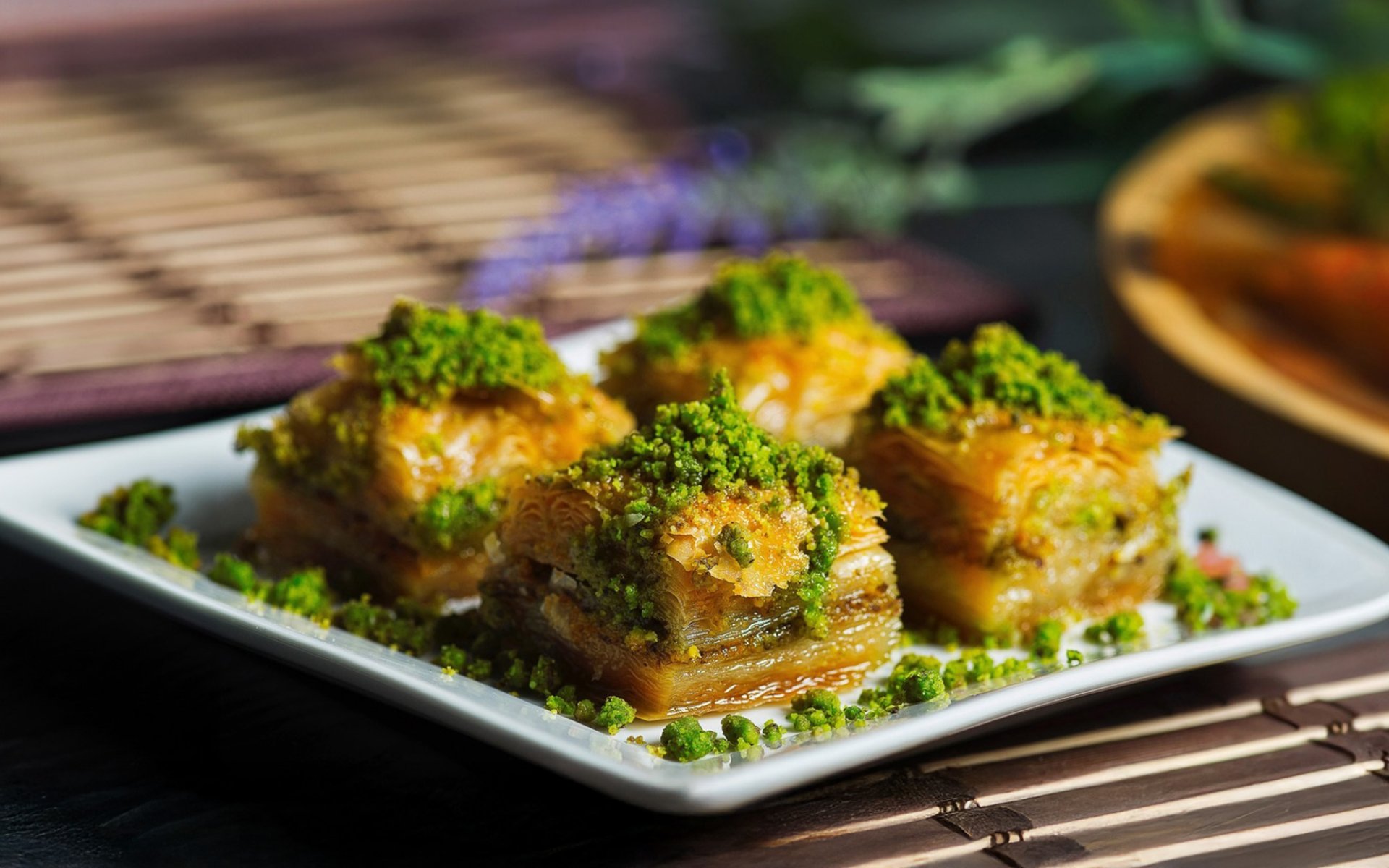Baklava

In the world of desserts, few can tell a story as rich in history and culture as Baklava. This renowned sweet, with its delicate layers of pastry, nutty filling, and sweet syrup, is not merely a confection; it is a testament to time, having journeyed through ancient civilizations for millennia, and continues to be cherished by people worldwide.
Origins: From Mesopotamia to the Byzantine Empire and Divine Offerings
Dating back over 4,000 years, to ancient Mesopotamia (circa 2000 BCE), it is believed that the Assyrians created a sweet called Shirin-i va nazuk. This dessert, similar to modern baklava, featured thin layers of dough filled with nuts and honey, evolving over time and spreading to various regions. Legend has it that baklava was initially prepared as an offering to deities, symbolizing respect and gratitude to the divine, highlighting the spiritual significance of this pastry in ancient times.
As time progressed, the technique for making this type of pastry became more widely known during the Byzantine Empire (roughly 4th - 15th centuries AD). It is said that the Byzantines were skilled in the art of pastry making. They adapted and refined the recipe, giving it their unique touch. Generally, it was prepared for religious celebrations and special occasions, such as weddings or important festivals, indicating its cultural value and role in society.
The Golden Age of Baklava: The Ottoman Empire and Global Spread
However, one of the most significant chapters in baklava's history began during the Ottoman Empire (modern-day Turkey), when it was at its peak of power and prosperity. The popularity of baklava spread rapidly throughout the Middle East, the Balkan Peninsula, and North Africa. During this period, the pastry became known as Baklava, derived from the Mongolian word "Baqlawa," meaning to pile up, referring to its many beautifully stacked and abundant layers.
Throughout history, baklava has been more than just a sweet; it often played a symbolic role in traditions, culture, and religion. In some Middle Eastern cultures, baklava is closely associated with important celebrations like weddings and birthdays, as its intricate layers are believed to represent layers of happiness, abundance, and prosperity in life. Gifting baklava is thus akin to bestowing blessings.
Phyllo Dough and Evolved Flavors: The Greek Influence
As trade flourished, the ancient Greeks, renowned as brilliant innovators, navigators, and traders, played a crucial role in baklava's development. They innovated the baklava dough, creating extremely thin, light, and delicate sheets known as Phyllo dough. This very dough is used for baklava today and is the key to its unique texture. Additionally, the Greeks diversified its flavors, beginning to incorporate rosewater syrup and bay leaves, adding complex and aromatic dimensions to baklava's taste.
Baklava Today: A Symbol of Turkish Cuisine and Global Recognition
Today, baklava has become a prominent symbol of Turkish cuisine, as the Turks inherited this culinary tradition and its recipes from their Ottoman ancestors. Although the recipe has evolved over centuries, its core elements remain unchanged. This classic sweet is still made from dozens of thin layers of phyllo dough, filled with various crushed nuts such as walnuts, pistachios, or almonds, then baked until golden and fragrant. Finally, it's generously drizzled with a sweet syrup made from sugar, rosewater, honey, and lemon, resulting in a perfectly balanced sweet, nutty, and crispy delight.
In 2013, Gaziantep Baklavas from Turkey received PGI (Protected Geographical Indication) status from the European Union. This designation certifies its geographical origin and product quality, as this particular baklava originates from Gaziantep, a city renowned for its dedication to baklava and its exceptional quality. Gaziantep baklava has unique characteristics: its phyllo dough must be uniformly thin (so thin that one can read a book through it), and it's filled with bright green pistachios specifically grown in the region, which impart a distinct aroma. It is then generously coated with clarified butter and meticulously baked at the right temperature. Once cooked, it is drizzled again with syrup and allowed to cool, ensuring the syrup permeates every layer, before being delicately cut into diamond shapes and served. This process preserves the original quality and unique identity passed down through generations.
Currently, baklava is a sweet treat found in bakeries, local eateries, and high-end restaurants worldwide. Its unique taste and long history reflect the creativity of ancient civilizations that led to modern baklava. Today, baklava has become a widely recognized and truly beloved dessert across the globe, remaining a symbol of sweetness and enduring tradition.


